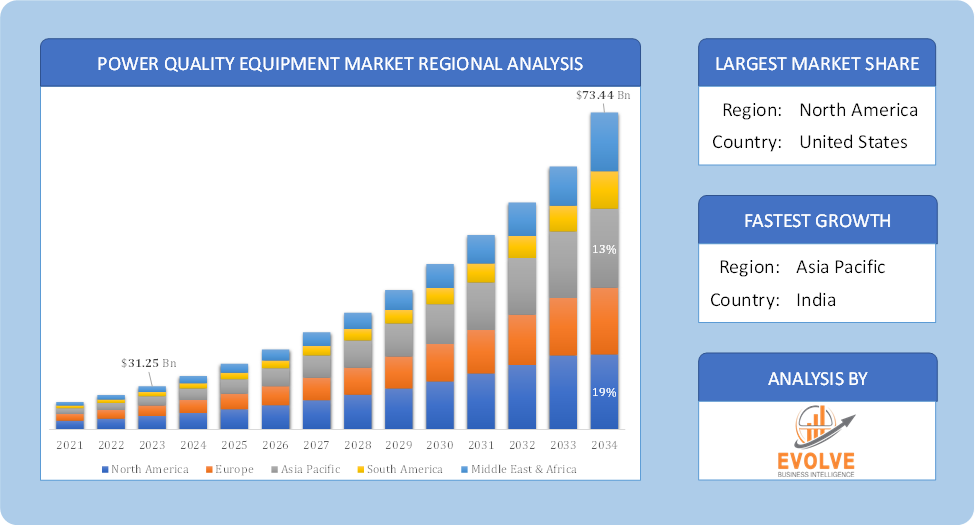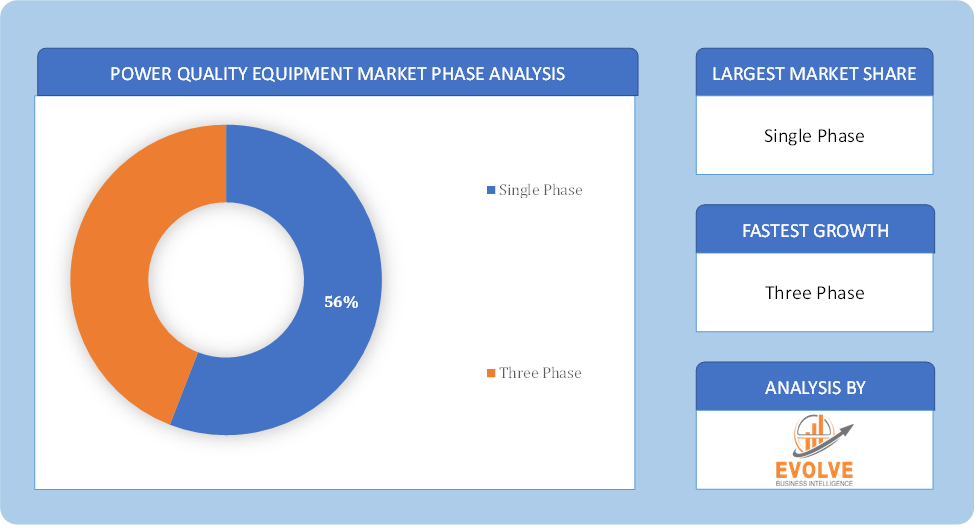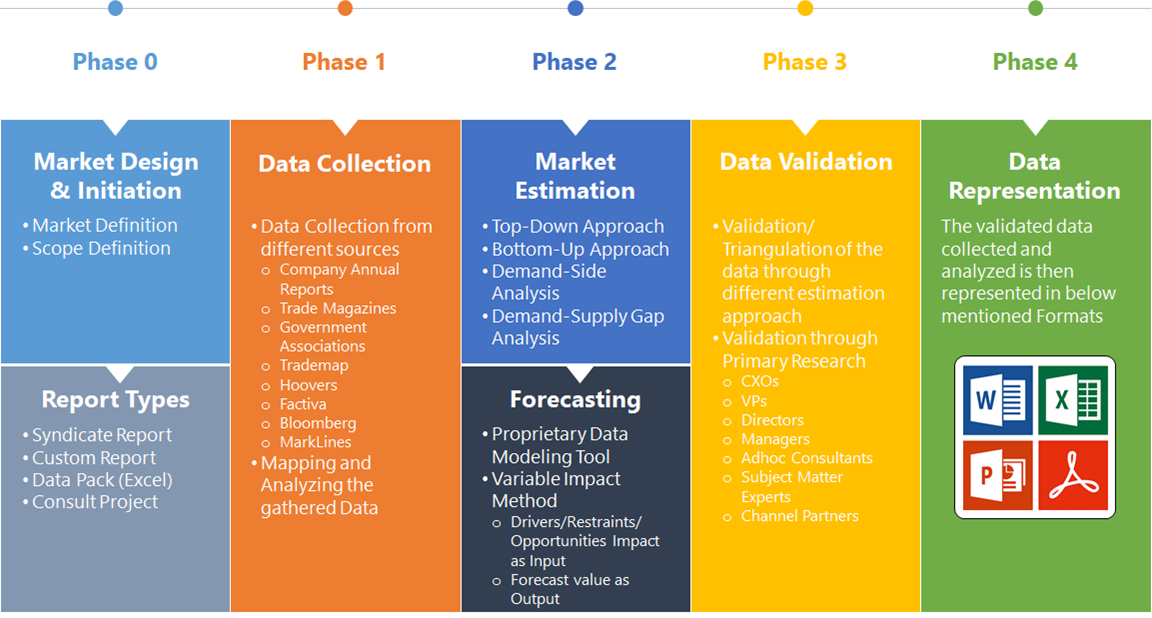Power Quality Equipment Market Overview
The Power Quality Equipment Market size accounted for USD 31.25 Billion in 2023 and is estimated to account for 32.54 Billion in 2024. The Market is expected to reach USD 73.44 Billion by 2034 growing at a compound annual growth rate (CAGR) of 6.35% from 2024 to 2034. The Power Quality Equipment Market refers to the sector focused on products and technologies designed to improve the quality of electrical power. Power quality issues can arise from various sources, including electrical noise, voltage sags or swells, harmonic distortion, and interruptions in power supply, which can adversely affect equipment performance and reliability.
The Power Quality Equipment Market is expected to grow as industries continue to invest in technologies that enhance operational efficiency and reliability. The demand for high-quality power is becoming more critical as businesses and consumers become increasingly dependent on advanced electronic devices.
Global Power Quality Equipment Market Synopsis Power Quality Equipment Market Dynamics
Power Quality Equipment Market Dynamics
The major factors that have impacted the growth of Power Quality Equipment Market are as follows:
Drivers:
Ø Increase in Industrial Automation
The growing trend of automation in industries requires reliable power supply to ensure the smooth operation of machinery and processes. This dependence on electrical equipment drives the demand for power quality equipment to protect against power disturbances. The rapid growth of data centers, driven by the rise of cloud computing and big data, requires a high-quality power supply to ensure operational continuity and protect sensitive equipment. This creates significant demand for power quality solutions. Continuous innovations in power quality equipment, such as the development of smart devices and IoT-based solutions, enhance the performance and reliability of power quality systems, driving market growth.
Restraint:
- Perception of High Initial Investment Costs and Complexity of Integration
The upfront costs associated with purchasing and installing power quality equipment can be significant, particularly for small and medium-sized enterprises (SMEs). This financial burden may deter potential buyers from investing in necessary equipment. Integrating power quality equipment with existing electrical systems can be complex and may require specialized expertise. This complexity can lead to longer installation times and increased project costs, which may hinder market growth.
Opportunity:
⮚ Emergence of Smart Grids
The transition to smart grid technologies offers significant opportunities for power quality equipment. These grids require advanced monitoring and management systems, creating demand for power quality solutions that ensure reliability and efficiency. With growing regulatory pressures and corporate sustainability goals, there is an increased focus on energy efficiency. Power quality equipment that helps reduce energy waste and optimize performance can benefit from this trend. Continuous advancements in power quality technologies, such as improved surge protection devices, harmonic filters, and energy management systems, offer opportunities for manufacturers to differentiate their products and gain market share.
Power Quality Equipment Market Segment Overview
Based on Equipment, the market is segmented based on Surge Arresters, Surge Protection Devices, Harmonic Filters, Power Conditioning Units, Power Distribution Units, Uninterruptable Power Supplies, Synchronous Condensers, Voltage Regulators, Digital Static Transfer Switches, Static Var Compensators, Solid Oxide Fuel Cells, Isolation Transformers and Power Quality Meters. The uninterruptible power supply segment dominant the market. A UPS power quality device provides a critical system load with reliable, continuous power. The device protects against any potential incoming distribution system power quality issues, such as interruptions, harmonics, voltage sags, swells, and noise that could impede the operation of sensitive electronic components and other electrical equipment.
By Phase
Based on Phase, the market segment has been divided into Single Phase and Three Phase. The Three-phase segment dominant the market. Three-phase power quality equipment is needed in the utilities, industrial, and transportation sectors due to the widespread use of three-phase by customers around the world. It is powered by power grids, data centers, ships, aircraft, and other electronic equipment requiring more than 1,000 watts of power. It is the most efficient way of transmitting power over great distances, allowing large industrial equipment to run more efficiently.
By End User
Based on End user, the market segment has been divided into Residential, Commercial, Industrial and Manufacturing, Utilities and Transportation. The industrial & manufacturing segment dominated the market. Power grids provide most of the electricity utilized in industrial and manufacturing operations. However, many manufacturing and industrial machinery components are prone to power quality problems such as interruption, imbalance, distortion, voltage volatility, and voltage flicker. To avoid such power quality problems, the commercial and industrial sector uses a variety of devices, including noise filters, compensators, filters, constant voltage transformers, and filters.
Global Power static distribution Quality Equipment Market Regional Analysis
Based on region, the global Power Quality Equipment Market has been divided into North America, Europe, Asia-Pacific, the Middle East & Africa, and Latin America. North America is projected to dominate the use of the Power Quality Equipment Market followed by the Asia-Pacific and Europe regions.
 Power Quality Equipment North America Market
Power Quality Equipment North America Market
North America holds a dominant position in the Power Quality Equipment Market. North America is one of the largest markets for power quality equipment, driven by advanced infrastructure and a focus on energy efficiency. High adoption of renewable energy sources and smart grid technologies, stringent regulations regarding energy efficiency and sustainability and growing number of data centers requiring high-quality power.
Power Quality Equipment Asia-Pacific Market
The Asia-Pacific region has indeed emerged as the fastest-growing market for the Power Quality Equipment Market industry. The Asia-Pacific region is witnessing rapid growth in the power quality equipment market, driven by industrialization and urbanization. China is the world’s largest market for power quality equipment, driven by rapid industrialization and urbanization and India is rapidly growing market with significant potential for power quality improvement.
Competitive Landscape
The global Power Quality Equipment Market is highly competitive, with numerous players offering a wide range of software solutions. The competitive landscape is characterized by the presence of established companies, as well as emerging startups and niche players. To increase their market position and attract a wide consumer base, the businesses are employing various strategies, such as product launches, and strategic alliances.
Prominent Players:
- Eaton
- ABB
- Siemens
- Schneider Electric
- General Electric.
- Toshiba
- Emerson
- Legrand
- Honeywell
- Infinite Electronics Duromax
Scope of the Report
Global Power Quality Equipment Market, by Equipment
- Surge Arresters
- Surge Protection Devices
- Harmonic Filters
- Power Conditioning Units
- Power Distribution Units
- Uninterruptable Power Supplies
- Synchronous Condensers
- Voltage Regulators
- Digital Static Transfer Switches
- Static Var Compensators
- Solid Oxide Fuel Cells
- Isolation Transformers
- Power Quality Meters
Global Power Quality Equipment Market, by Phase
- Single Phase
- Three Phase
Global Power Quality Equipment Market, by End User
- Residential
- Commercial
- Industrial and Manufacturing
- Utilities
- Transportation
Global Power Quality Equipment Market, by Region
- North America
- US
- Canada
- Mexico
- Europe
- UK
- Germany
- France
- Italy
- Spain
- Benelux
- Nordic
- Rest of Europe
- Asia Pacific
- China
- Japan
- South Korea
- Indonesia
- Austalia
- Malaysia
- India
- Rest of Asia Pacific
- South America
- Brazil
- Argentina
- Rest of South America
- Middle East & Africa
- Saudi Arabia
- UAE
- Egypt
- South Africa
- Rest of Middle East & Africa
| Parameters | Indicators |
|---|---|
| Market Size | 2034: USD 73.44 Billion |
| CAGR (2024-2034) | 6.35% |
| Base year | 2022 |
| Forecast Period | 2024-2034 |
| Historical Data | 2021 (2017 to 2020 On Demand) |
| Report Coverage | Revenue Forecast, Competitive Landscape, Growth Factors, and Trends |
| Key Segmentations | Equipment, Phase, End User. |
| Geographies Covered | North America, Europe, Asia-Pacific, South America, Middle East, Africa |
| Key Vendors | Eaton, ABB, Siemens, Schneider Electric, General Electric., Toshiba, Emerson, Legrand, Honeywell and Infinite Electronics Duromax. |
| Key Market Opportunities | · Emergence of Smart Grids
· Increasing Focus on Energy Efficiency |
| Key Market Drivers | · Increase in Industrial Automation
· Technological Advancements |
REPORT CONTENT BRIEF:
- High-level analysis of the current and future Power Quality Equipment Market trends and opportunities
- Detailed analysis of current market drivers, restraining factors, and opportunities in the future
- Power Quality Equipment Market historical market size for the year 2021, and forecast from 2023 to 2033
- Power Quality Equipment Market share analysis at each product level
- Competitor analysis with detailed insight into its product segment, Government & Defense strength, and strategies adopted.
- Identifies key strategies adopted including product launches and developments, mergers and acquisitions, joint ventures, collaborations, and partnerships as well as funding taken and investment done, among others.
- To identify and understand the various factors involved in the global Power Quality Equipment Market affected by the pandemic
- To provide a detailed insight into the major companies operating in the market. The profiling will include the Government & Defense health of the company’s past 2-3 years with segmental and regional revenue breakup, product offering, recent developments, SWOT analysis, and key strategies.





